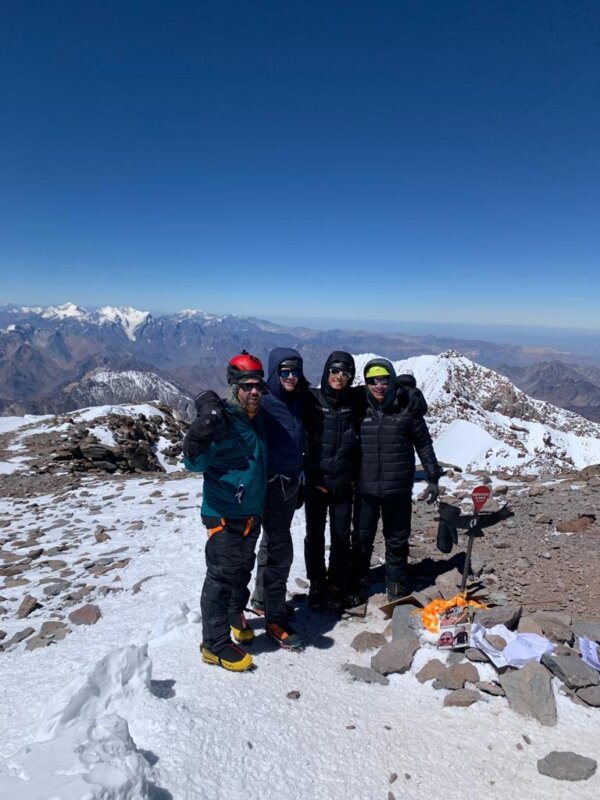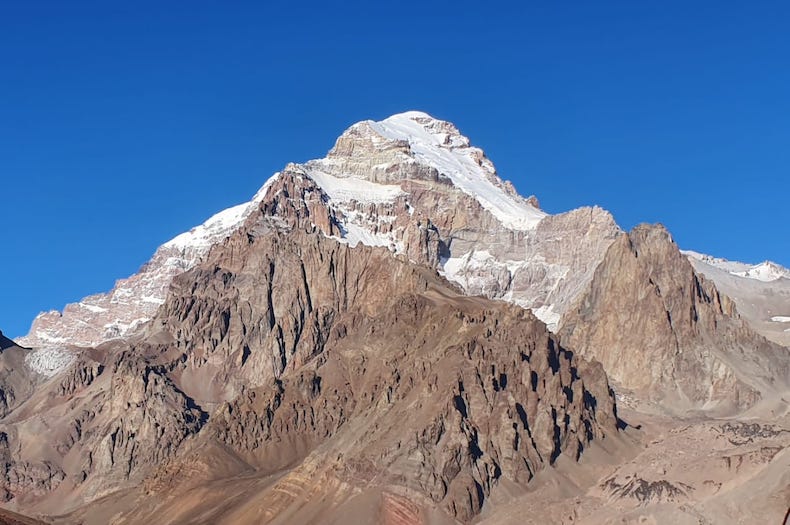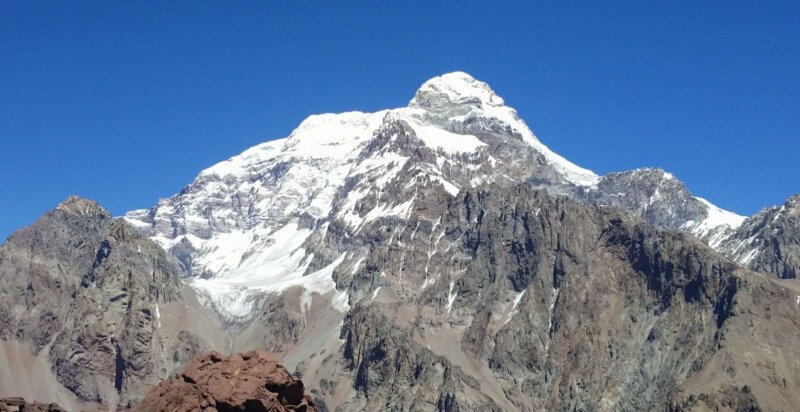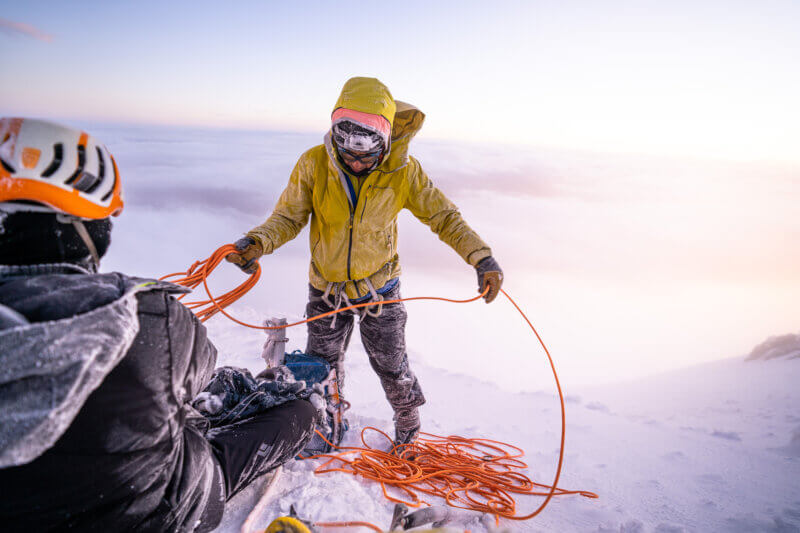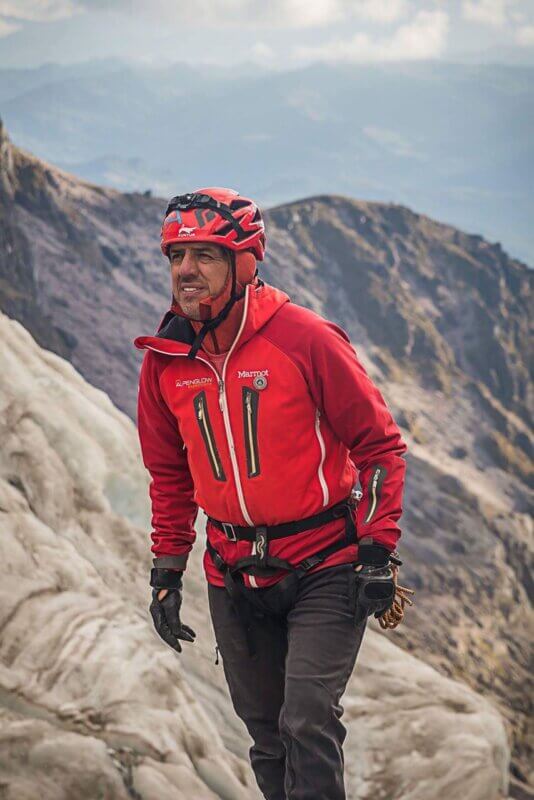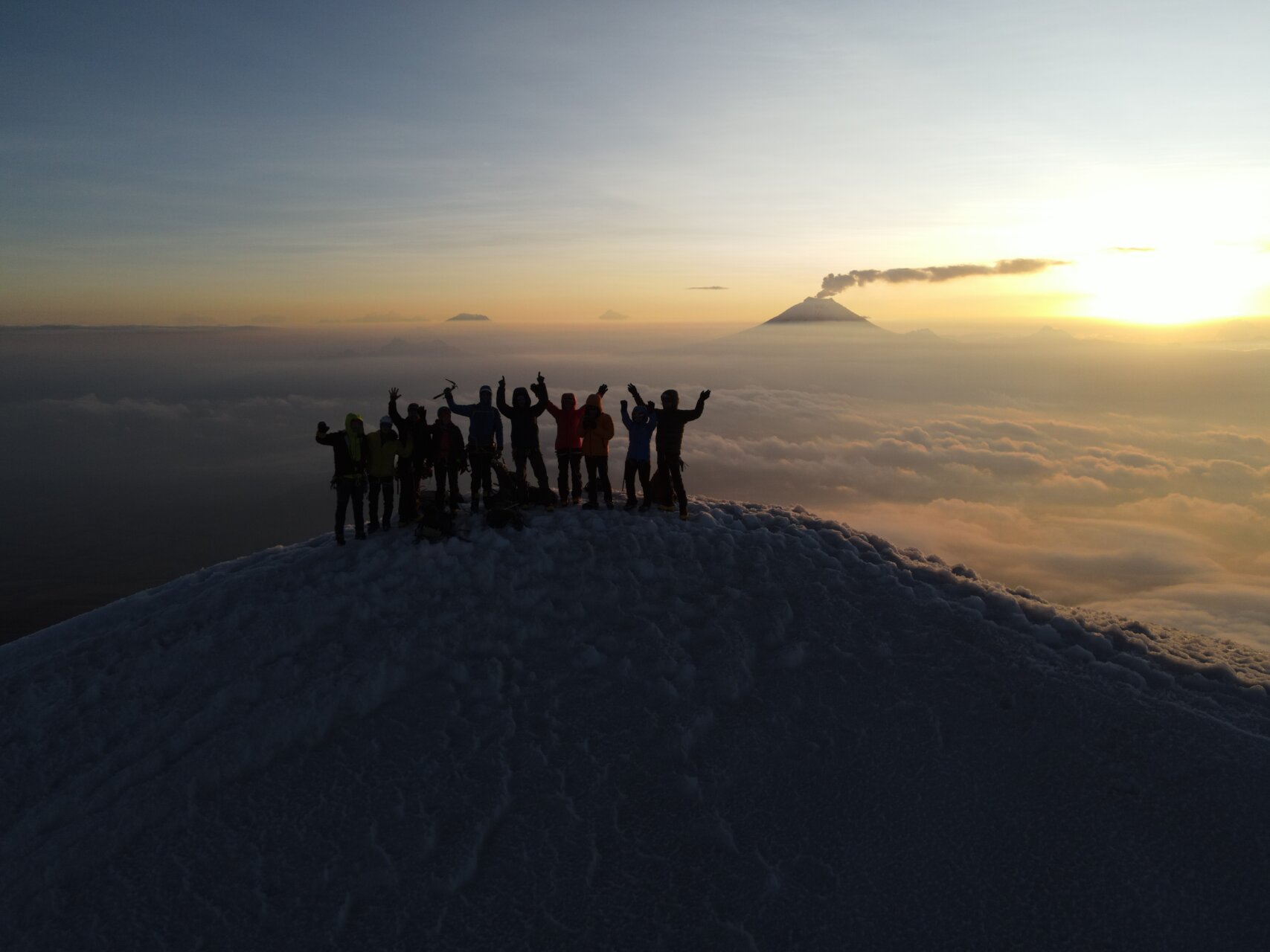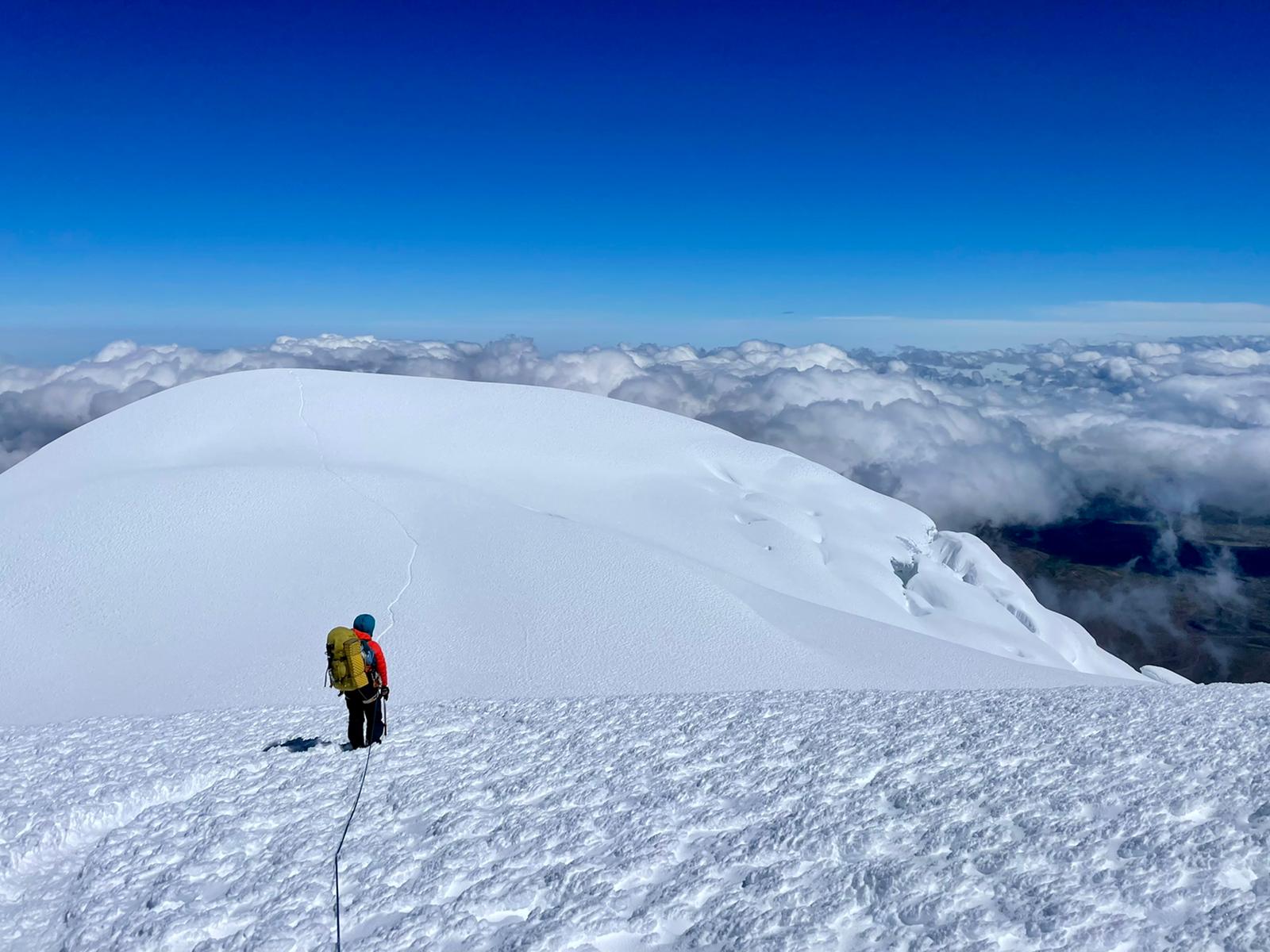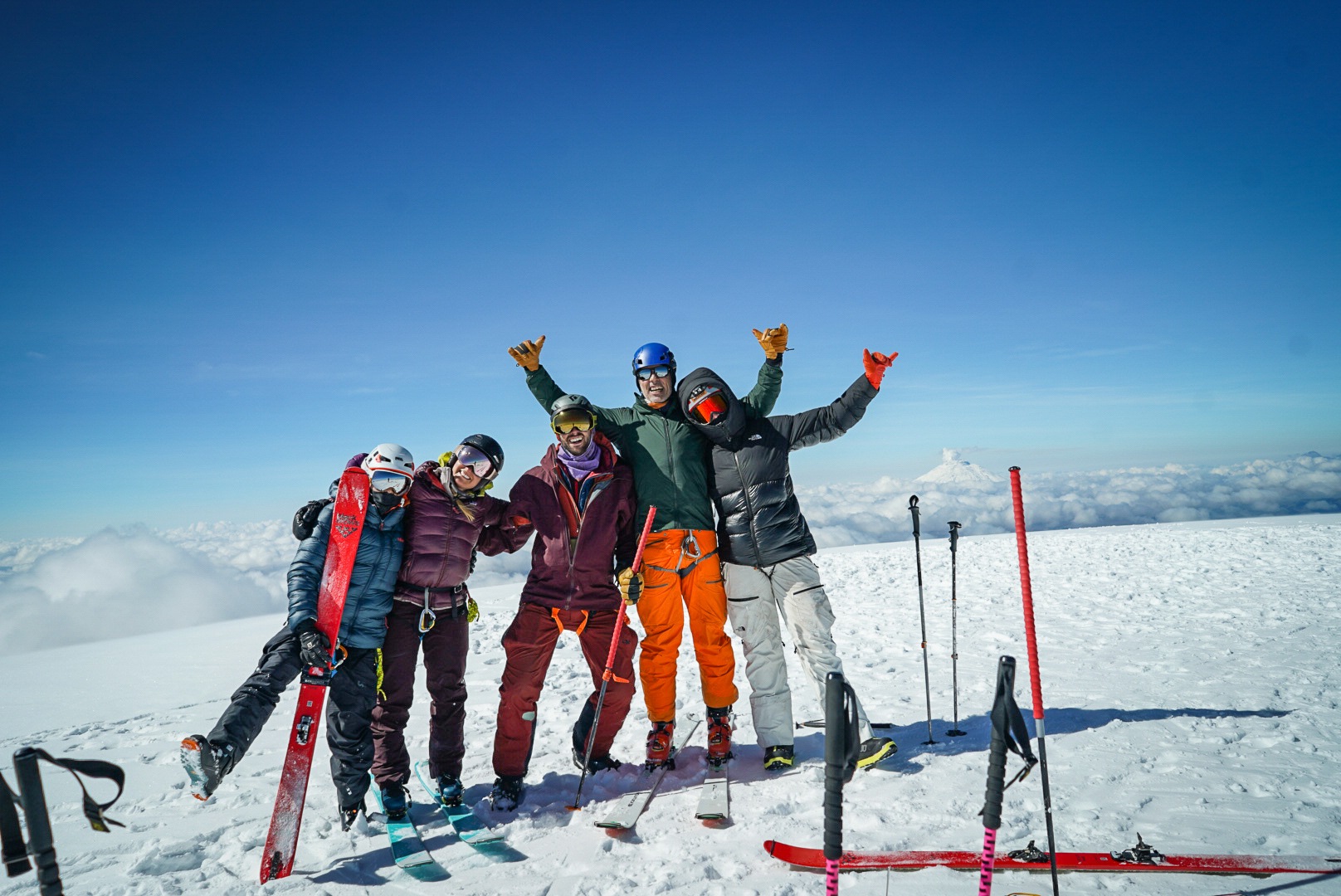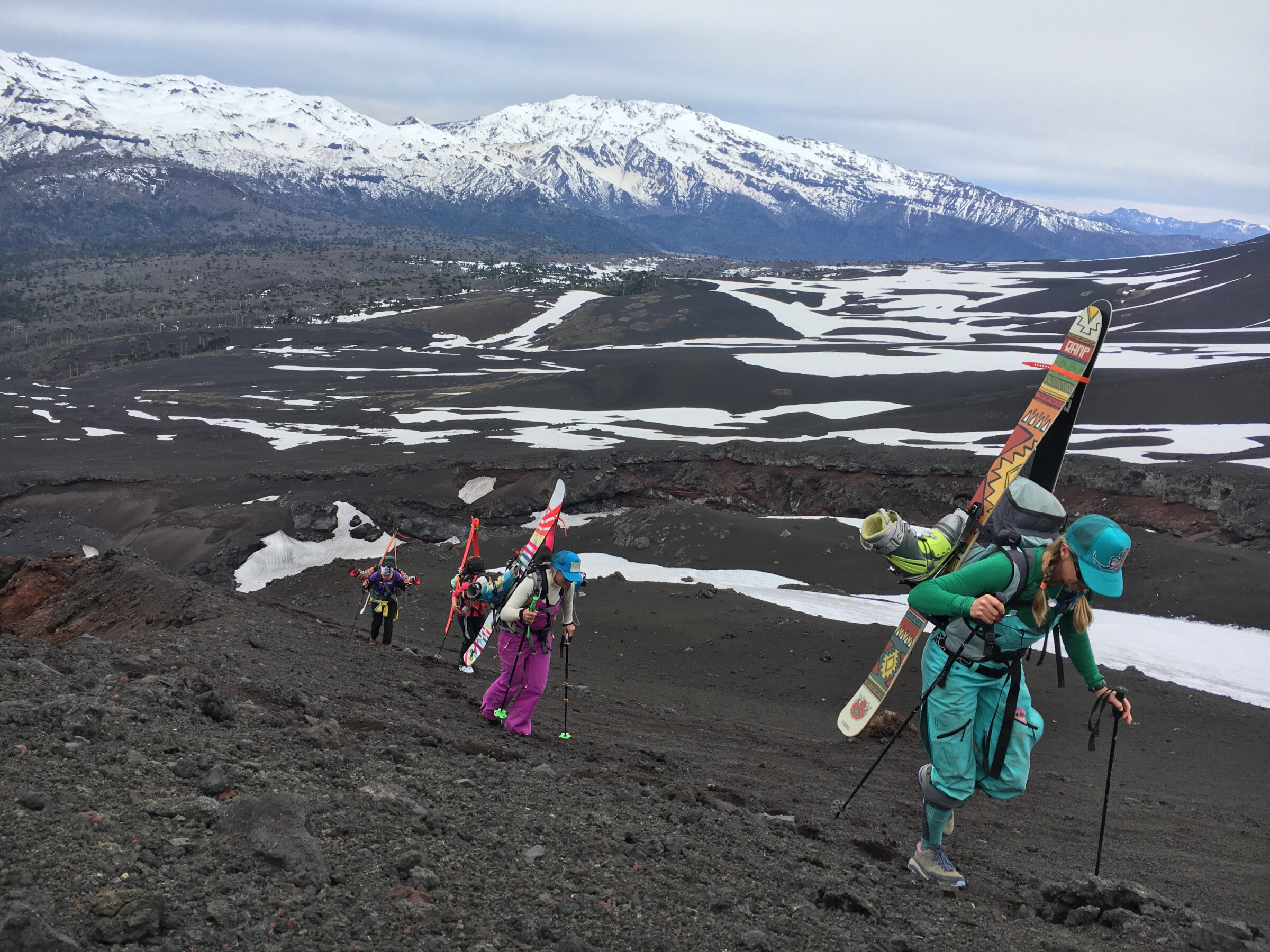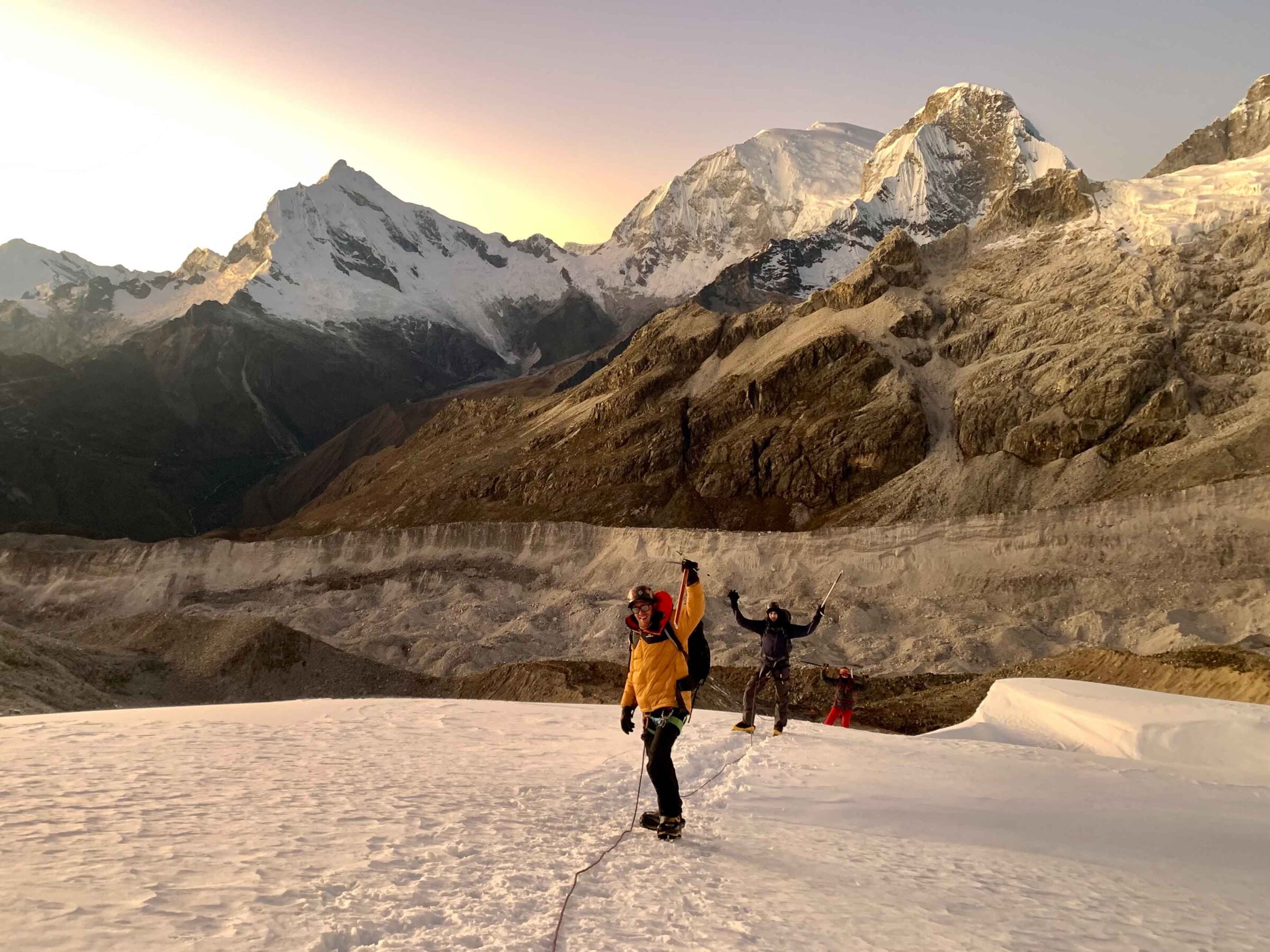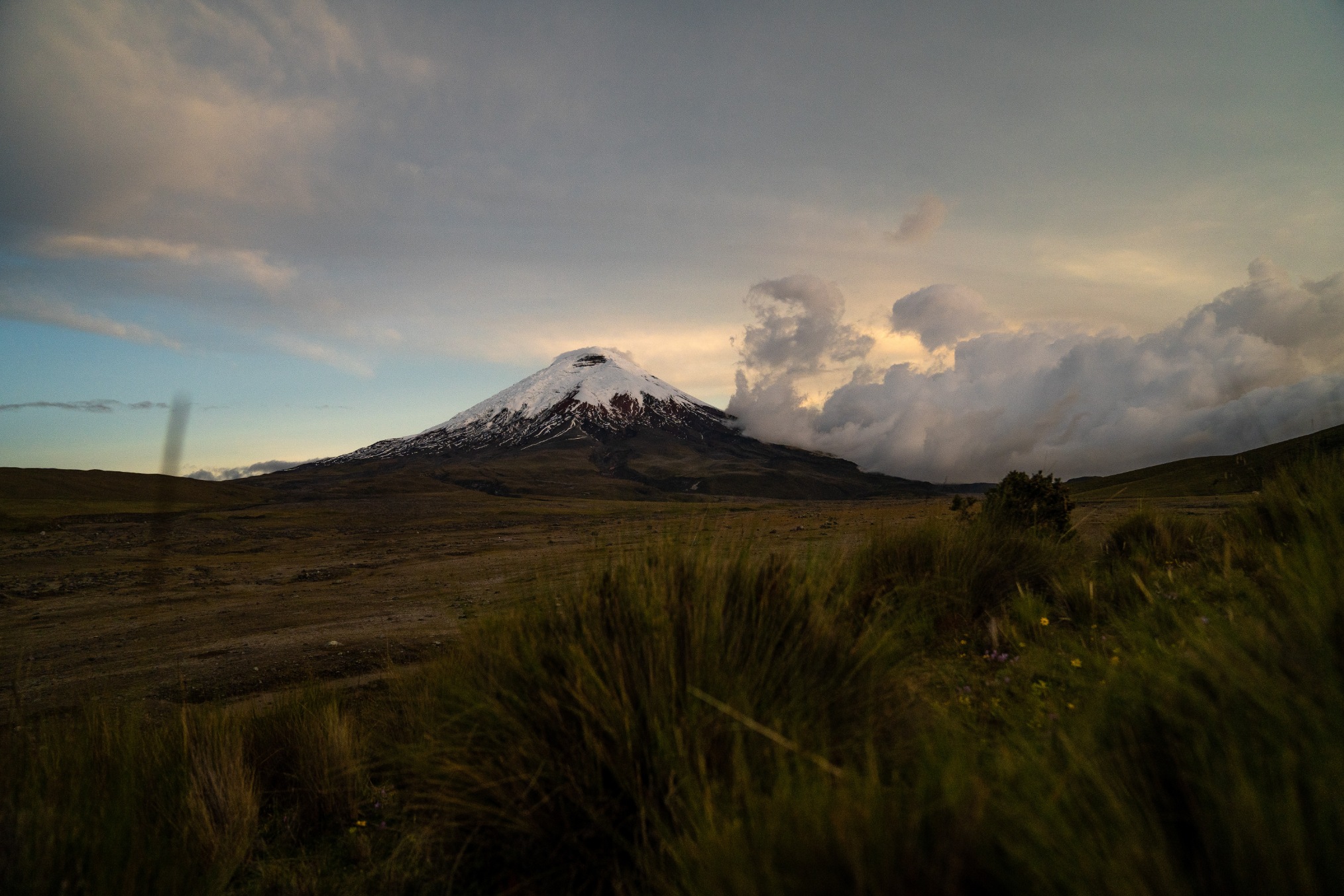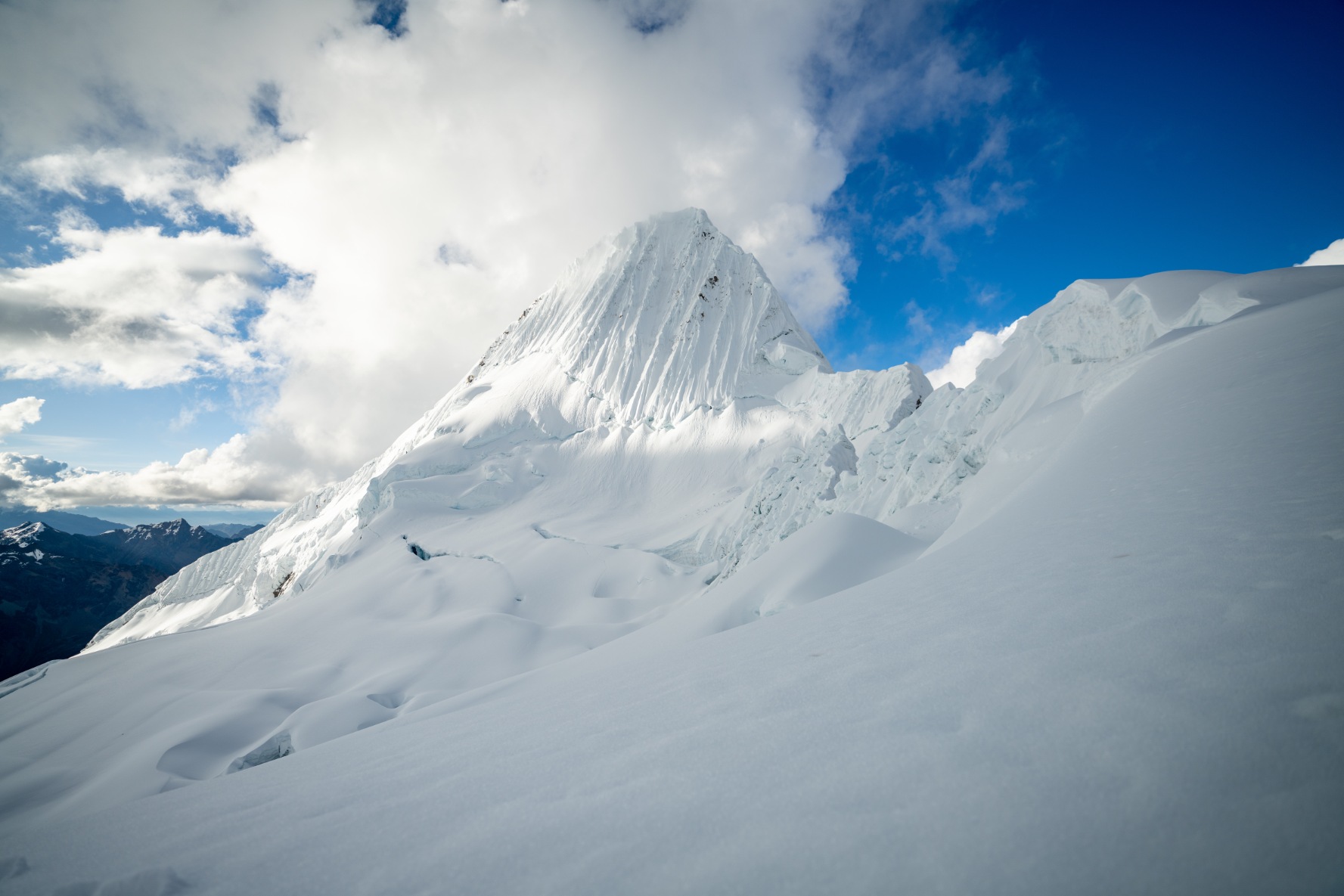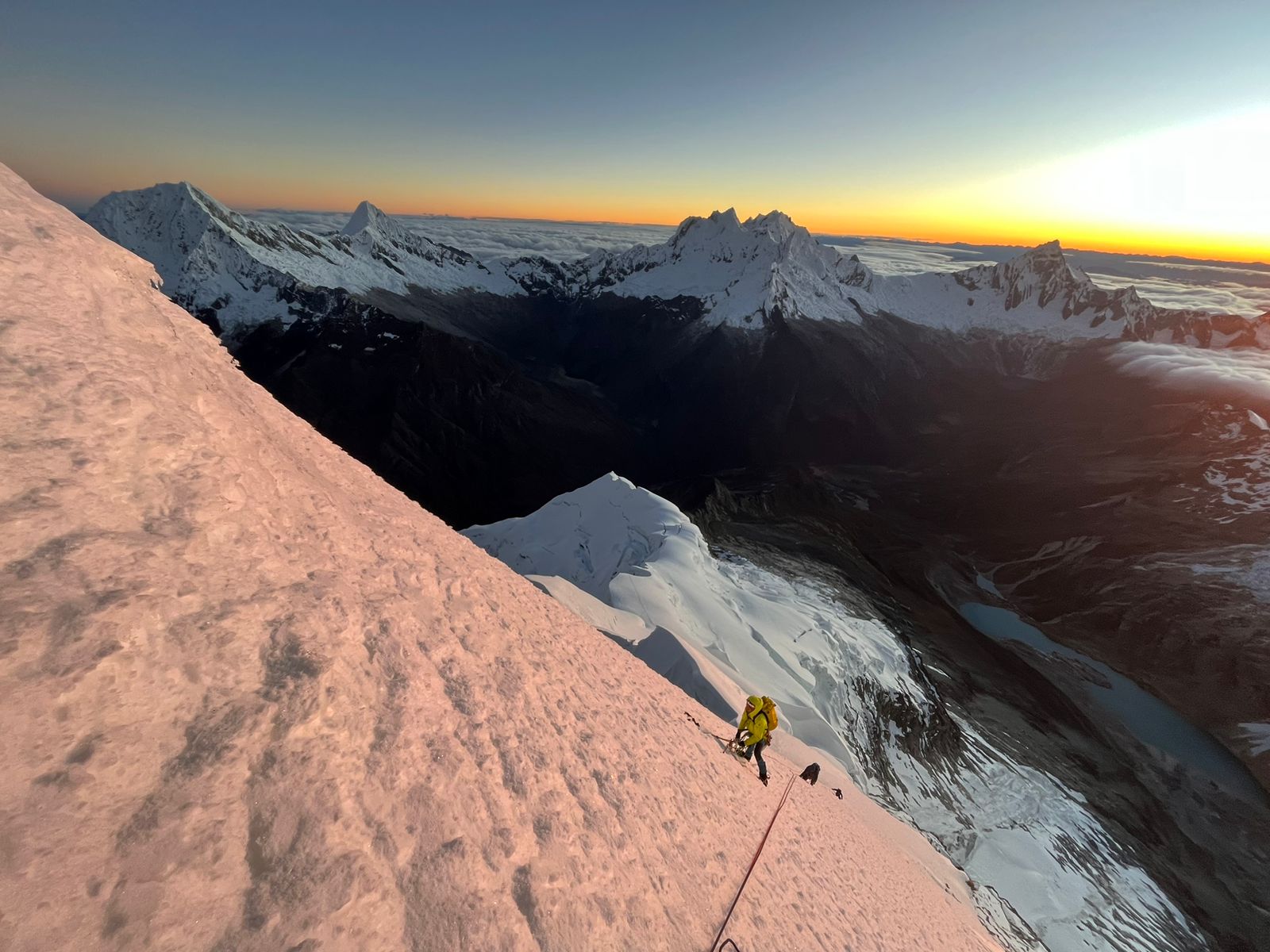A Brief History of Aconcagua

Aconcagua, standing at 22,831’/6,959m, is the highest peak in the Americas and one of the Seven Summits. Its history is rich and multifaceted, beginning with the indigenous cultures that inhabited the region long before modern mountaineers arrived. Today, it’s a popular peak for intermediate climbers to break into 7,000m, and an excellent step on the way to preparing for Mt. Everest. Alpenglow climbs Aconcagua up to 4 times each season between December and February, click HERE to read about the Aconcagua Rapid Ascent expedition.
Indigenous History
The Incas held Aconcagua in high regard, considering it a sacred mountain. Archaeological evidence, including well-preserved mummies of young children, suggests that the Incas performed ritual sacrifices on the mountain. These sacrifices were likely part of religious ceremonies intended to honor the mountain gods and seek their favor. The presence of these mummies, along with artifacts such as pottery and textiles found at high altitudes, underscores the mountain’s spiritual significance to the Incas. While there is no evidence to suggest that the Incas were technical climbers, it makes sense that evidence of their presence is found on Aconcagua, as it’s largely non-technical and allows climbers to walk up to great altitudes.
Early Climbing History
The first recorded attempt to climb Aconcagua was made in 1883 by Paul Güssfeldt, a German geologist and mountaineer. Although Güssfeldt did not reach the summit, his expedition provided valuable information about the mountain’s geography and conditions. His efforts inspired future climbers to take on the challenge.
The first successful ascent of Aconcagua was achieved in 1897 by Matthias Zurbriggen, a Swiss guide who was part of an expedition led by British climber Edward FitzGerald. Zurbriggen’s solo ascent via the Normal Route marked a significant milestone in mountaineering history. This route, which follows the northwest ridge of the mountain, remains the most popular and accessible path to the summit today.
While the Normal Route remains popular, Alpenglow typically chooses to climb the 360 Route, which traverses the peak and allows us to see more of the mountain and less traffic overall. Click HERE to learn more about the 360 route.
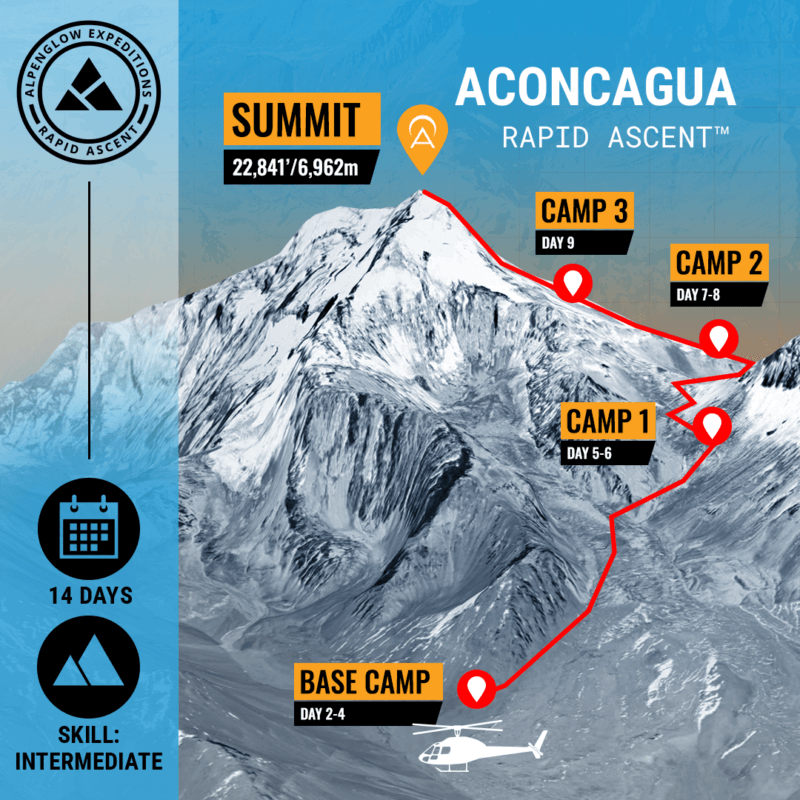
Modern Climbing
Aconcagua continues to be a magnet for climbers from around the world. Each year, thousands attempt to reach its summit, drawn by the challenge and the breathtaking views. While the Normal Route is the most frequented due to its relatively straightforward ascent, other routes like the Polish Glacier Route offer more technical climbs for experienced mountaineers. In 2009, Alpenglow’s own Esteban ‘Topo’ Mena made a historic ascent of the mountain’s South Face, a highly-technical 3,000′ wall of rock, snow, and ice. Click HERE to read more about Topo and his ascent of Aconcagua.
Climbers face numerous challenges on Aconcagua, including extreme cold, high winds, and the effects of altitude. Proper acclimatization is crucial, which is why Alpenglow exclusively climbs this mountain using our Rapid Ascent pre-acclimatization strategy. Despite these challenges, the mountain’s non-technical routes make it an attractive option for climbers aiming to experience high-altitude mountaineering without the need for advanced technical skills.
From its sacred status among the Incas to its position as a premier mountaineering destination, Aconcagua’s history is a testament to its enduring allure and significance. The mountain’s blend of cultural heritage and climbing challenges continues to captivate and inspire those who venture to its slopes.
Interested to learn more about Aconcagua? Click HERE to schedule a call with our team and learn if Aconcagua is the next step for you.

